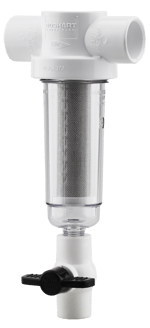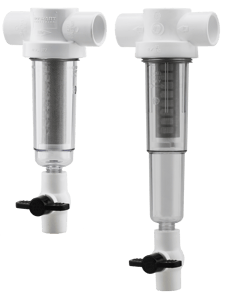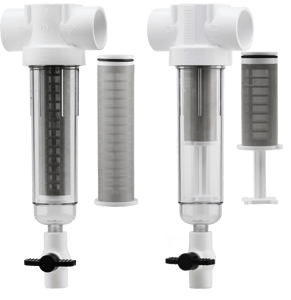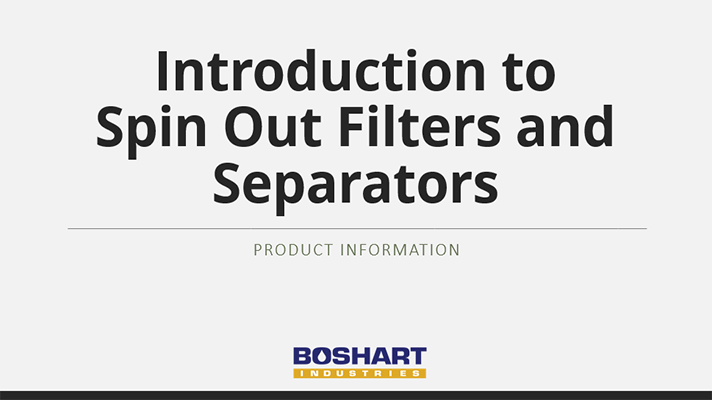Did you know that adding a Pre-Filter to your water filtration system will prolong the life span of your whole house water filtration system? This solution is best where large volume of scale, debris, pipe scale, coarse sand, fine sand, very fine sand, grit or heavy sediment is needing to be removed from your water filtration system.
In this blog we will go over what sediment filters & separators are, how they work, and the difference between the filters and separators. Along the way there may be terminology that's new to you but we will explain that too!
Sediment Filters & Separators

Sediment filters and separators are for pre-filtering water to remove sand and large sediment from a water supply. They are best installed where the water enters your house, also known as Point of Entry (POE). Generally this kind of filter is installed before any other whole house filters or appliances. By removing sand and large sediment upfront, the life span of other filters and appliances are increased.
You may come across other forms of sediment filters including pleated or string wound. The life of pleated or string wound filters can be extended by adding a sediment filter / separator before them. For more on those types of filters check out the ultimate beginner water filtration guide.
Terminology
The top of the filters & separators where water enters and exits is referred to as the head. Inside there is an element that the water "filters" through. Surrounding the element and screwing into the head is the bowl. Finally at the bottom there is a valve that is used for purging the filter.
How They Work
Water enters the housing through the inlet and creates a centrifugal force. As the water swirls around the cartridge, the weight of the sand forces it to the outside of the water and it eventually settles at the bottom of the filter housing. The filter elements are mostly blocked off at the bottom but have two holes for the sand to pass through. This is to prevent the spinning water from disturbing the settled sand at the bottom of the housing.
Purging
As sand builds up in the filter, it will need to be purged. Purging is the act of removing the unwanted build up within the filter. This is done by opening the valve at the bottom of the housing and letting the water and sand drain out. If there is buildup on the element it can also be removed and sprayed down to increase the life span.
Filter vs Separator
Both a sediment filter and separator work the same way. Filters use most of the bowl for filtering whereas separators have extra space at the bottom of the bowl for more sand to collect. In applications with heavy sand or sediment that needs to be removed having the extra space means it does not need to be purged as often. We have a blog that helps you select an element here.
In a 1" system the difference is in the bowl. Both a 1" filter & a 1" separator use the same element. Here is a picture of the difference, the filter is on the left and the separator is on the right.

In 1-1/2" and 2" systems the difference is in the element. The same bowl is used for these sized filters and separators. The filter element fills the length of the entire bowl, whereas the separator element only fills half of it as it has a half-length screen and is held in position by a long stem. In the picture below you can see the difference, the filter is on the left and the separator is on the right.

Removing sand, and large particles before water enters other filters will prolong their life. That is made easy with these reusable and purge-able filters & separators. I want to leave you with a quick tip, all parts for filters & separators can be replaced individually. Replacing the whole thing may not be necessary.
Have further questions about this subject?

Head over to Boshart's Knowledge Base: technical product information, guidelines, and more.


![[Video] What are the Differences Between a Traditional Sediment Filter & Spin Out Filter or Separator?](https://blog.boshart.com/hubfs/2022-02-01%20Social%20Media%20Photos%20-%20Filtration%20and%20Gear%20Clamp-10-1.jpg)

SHARE